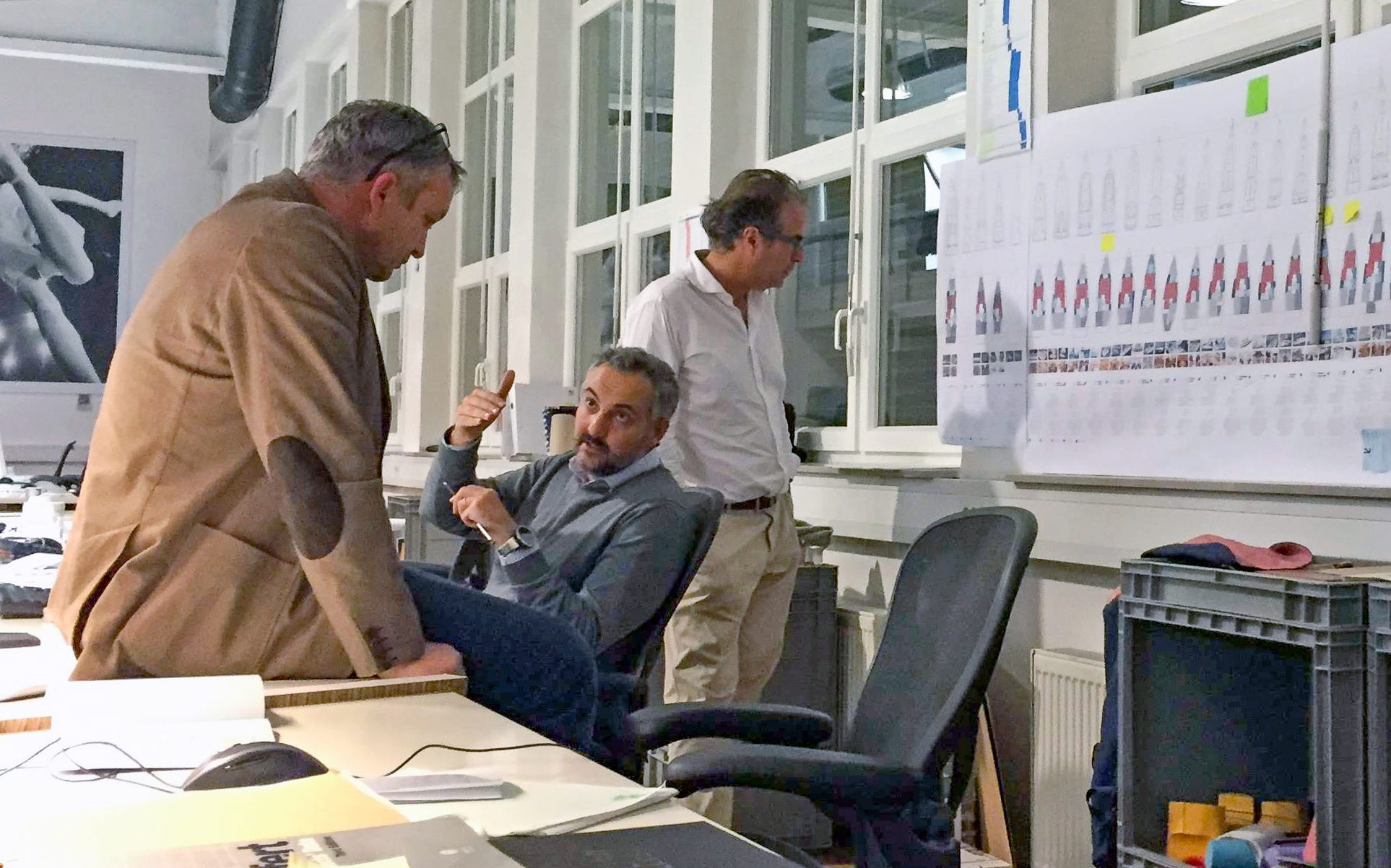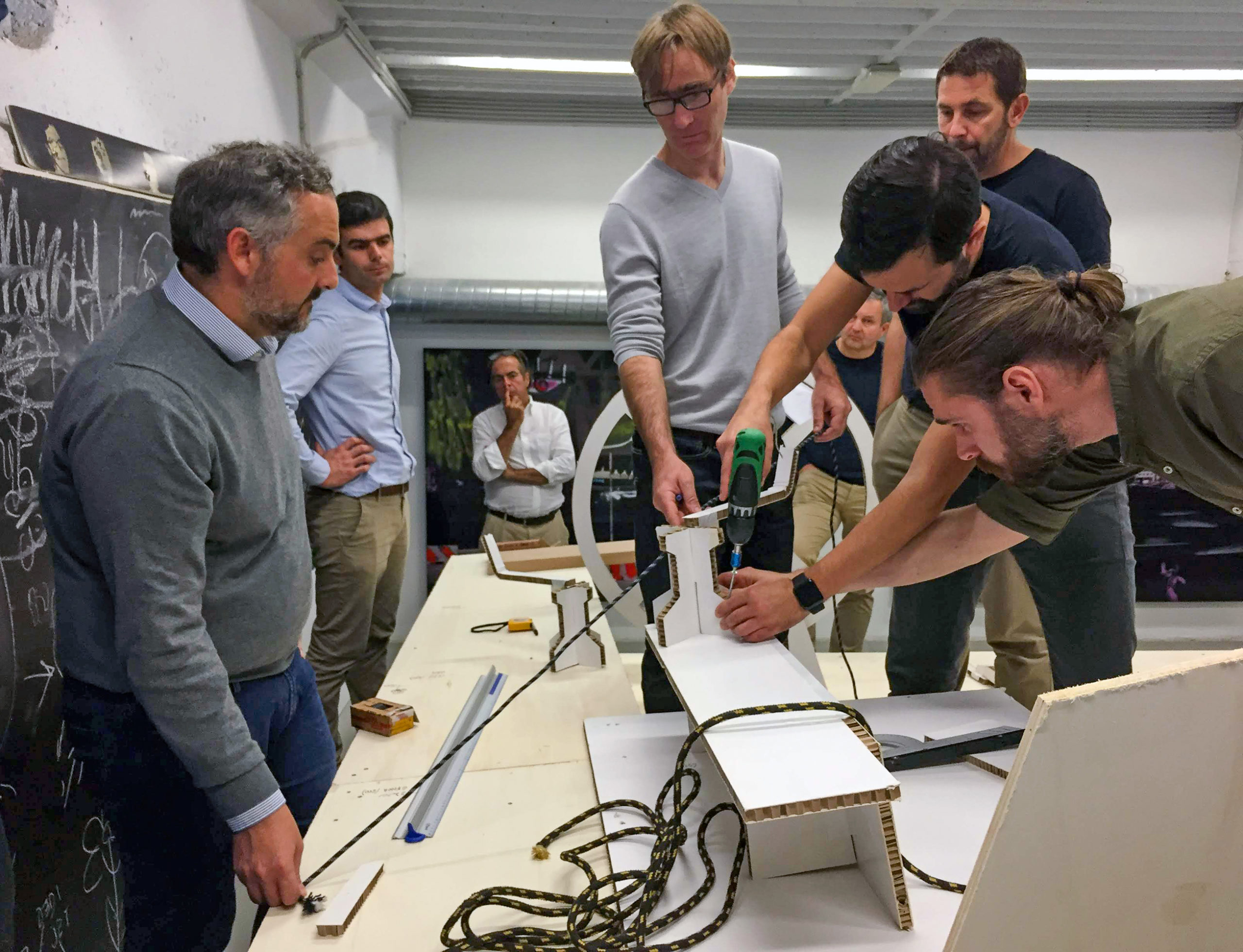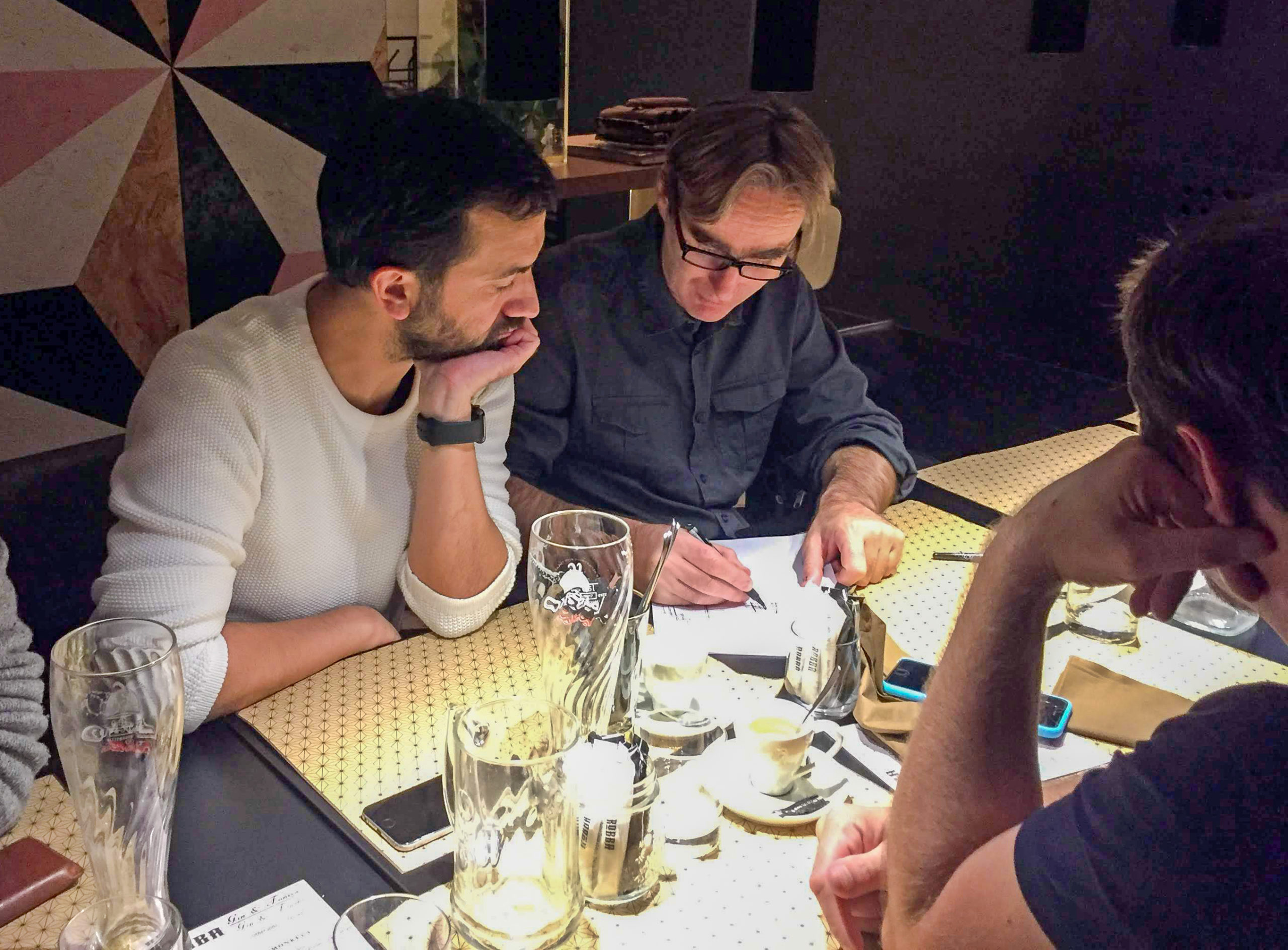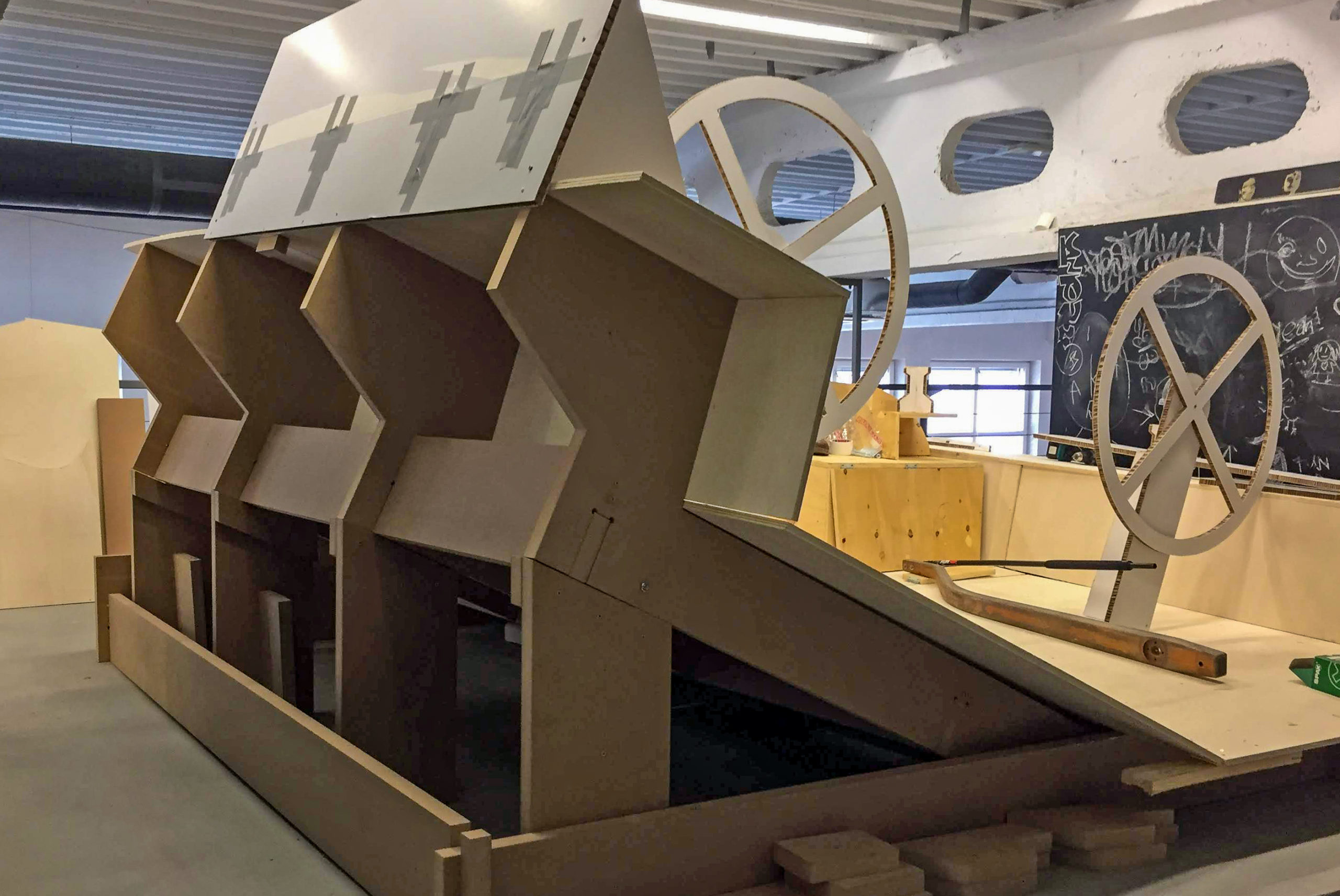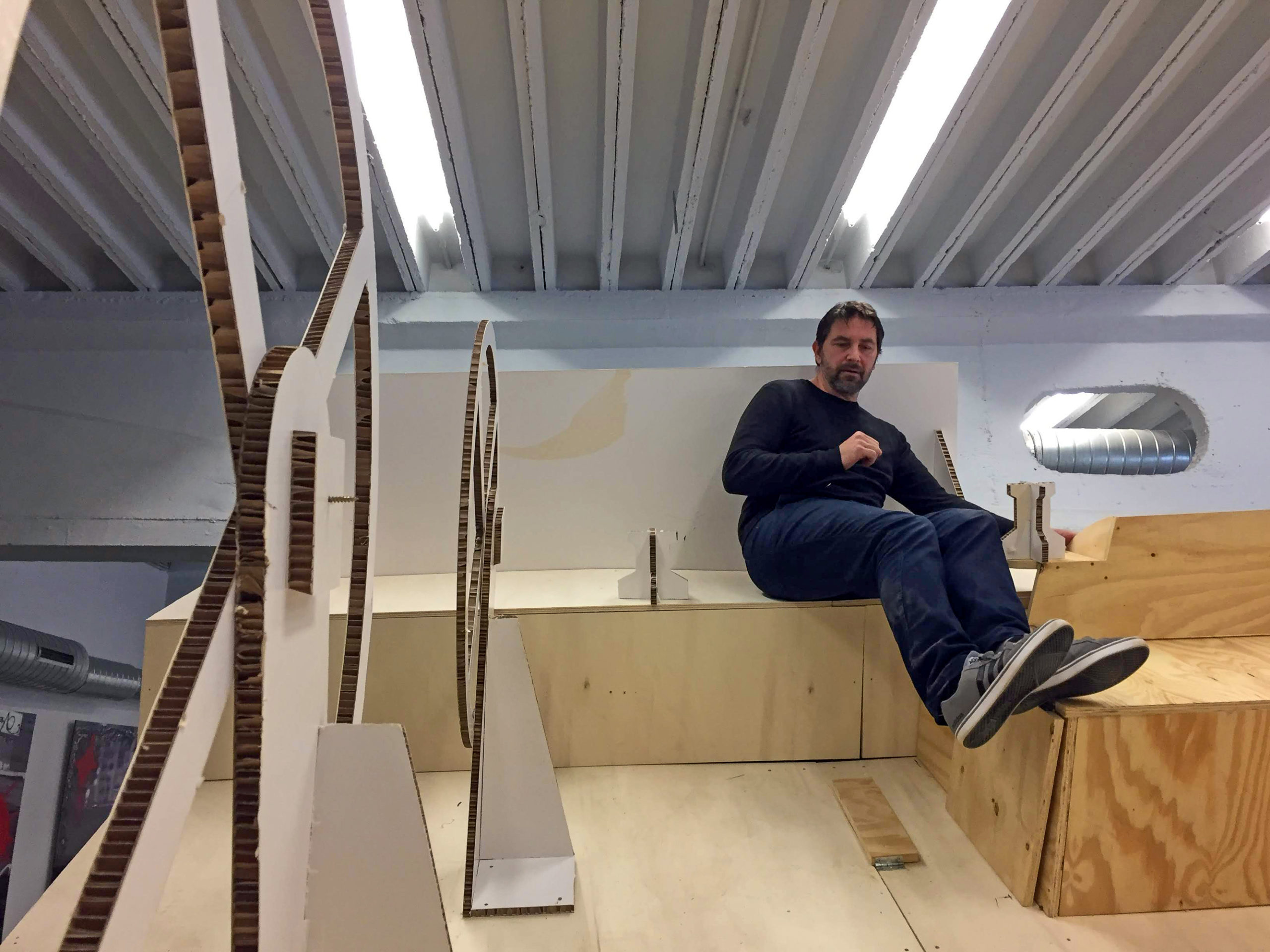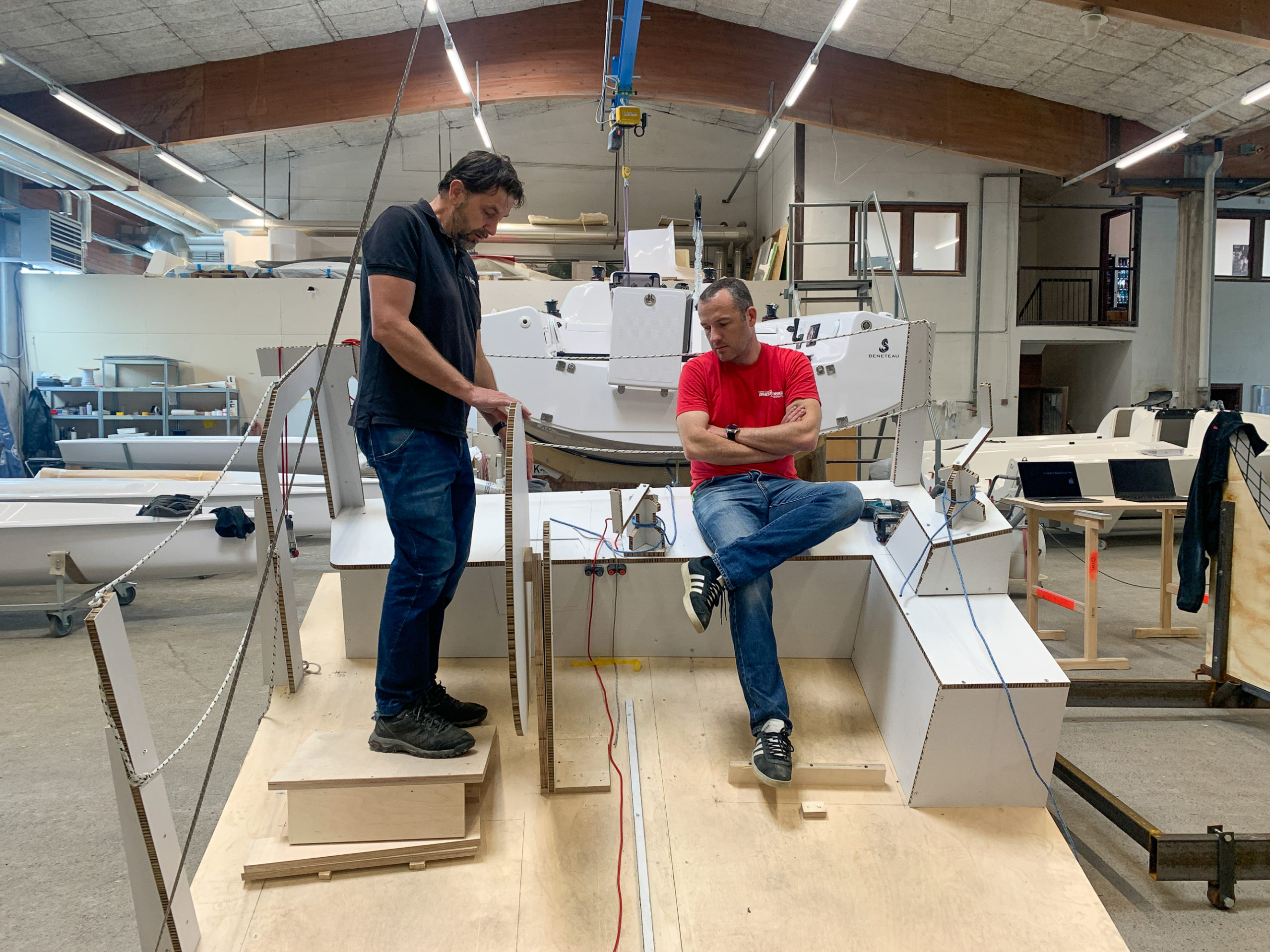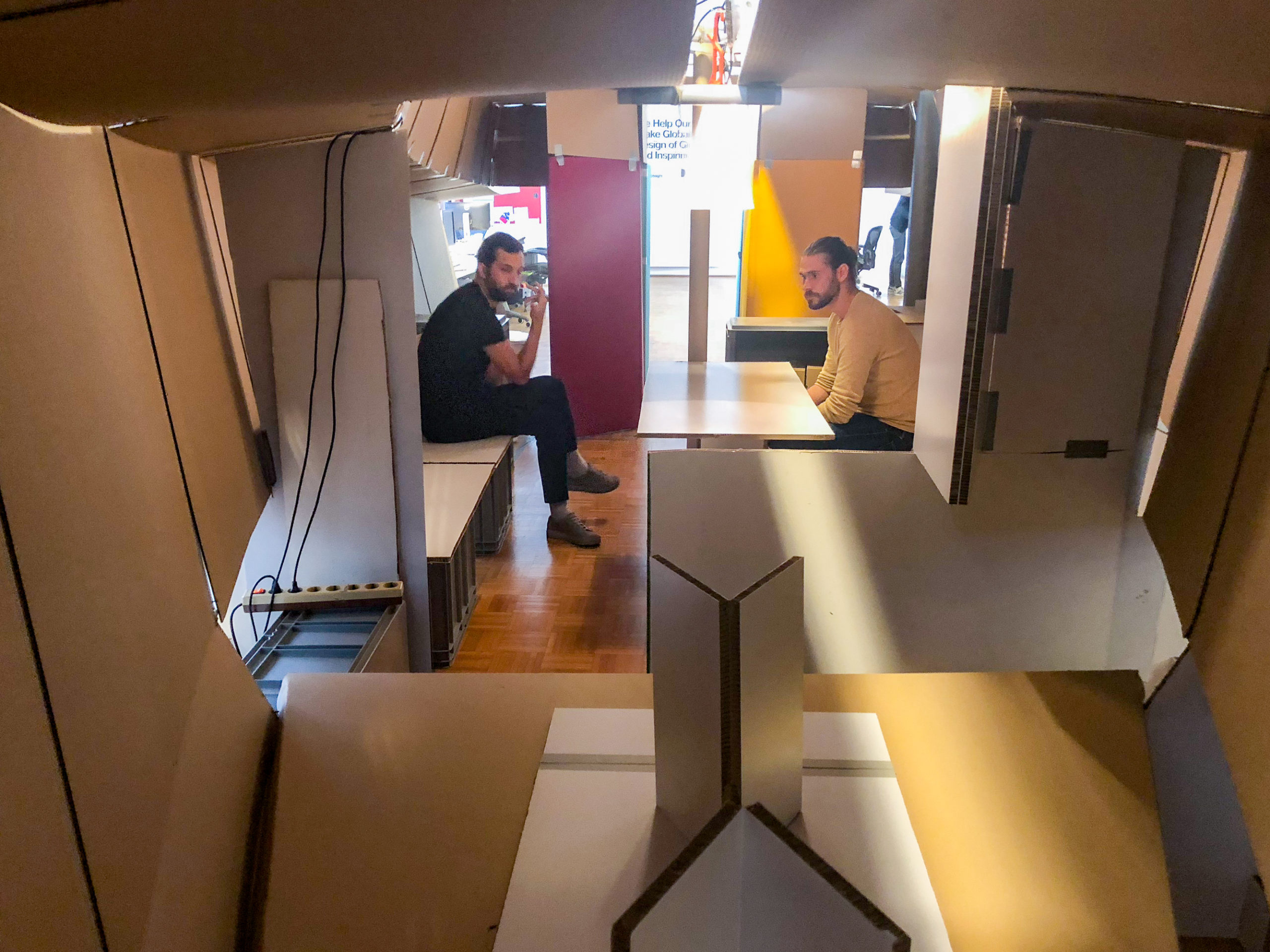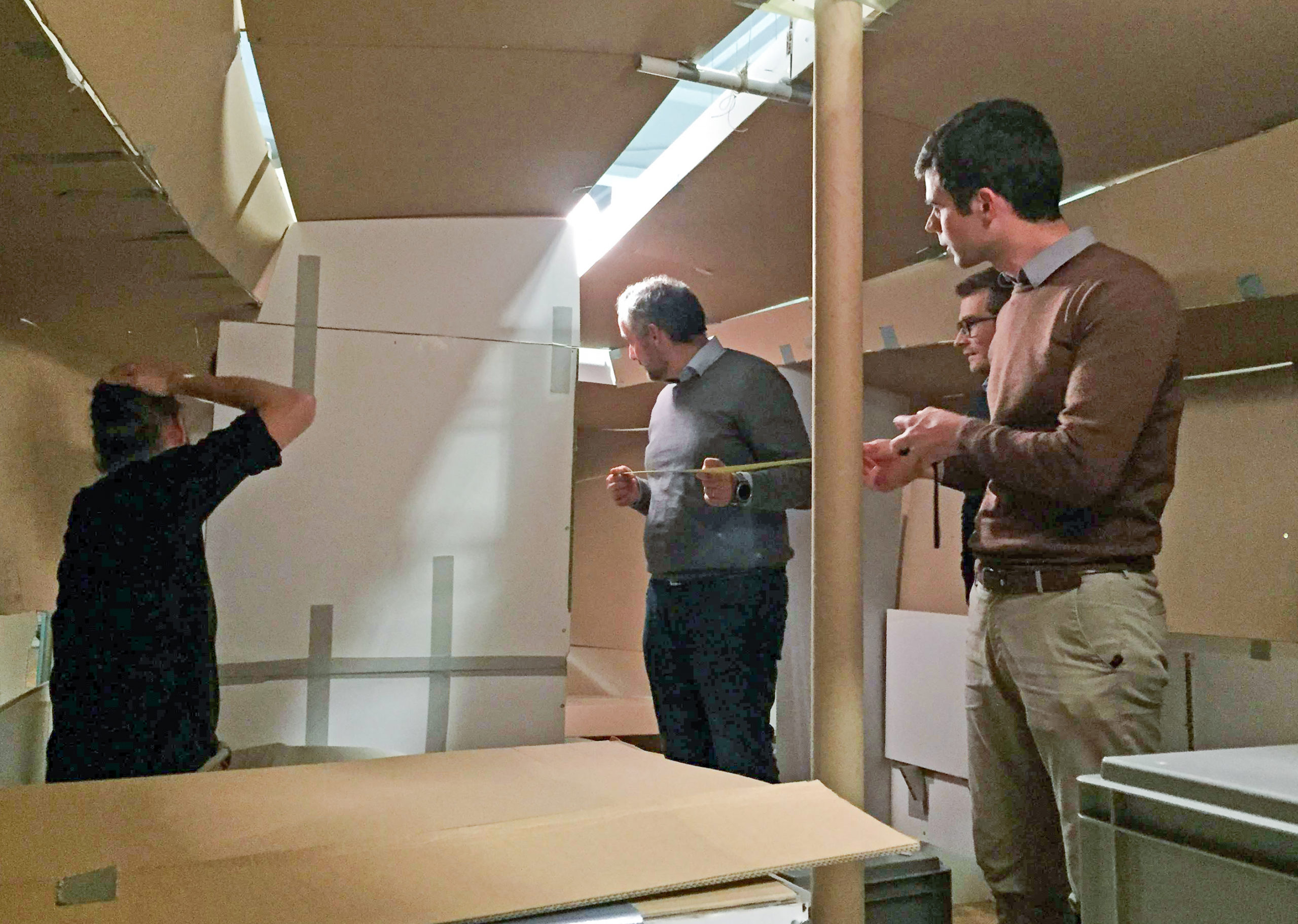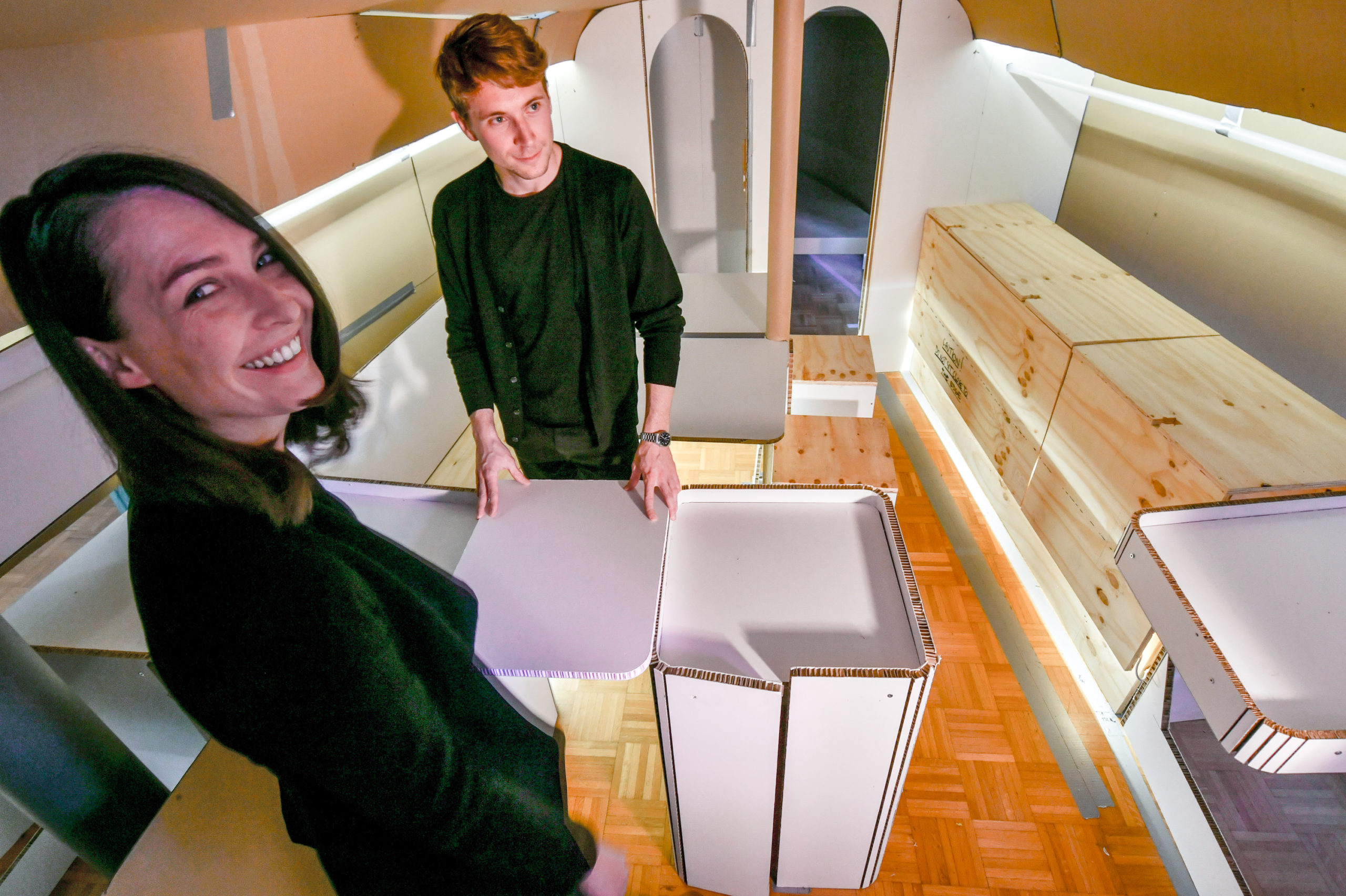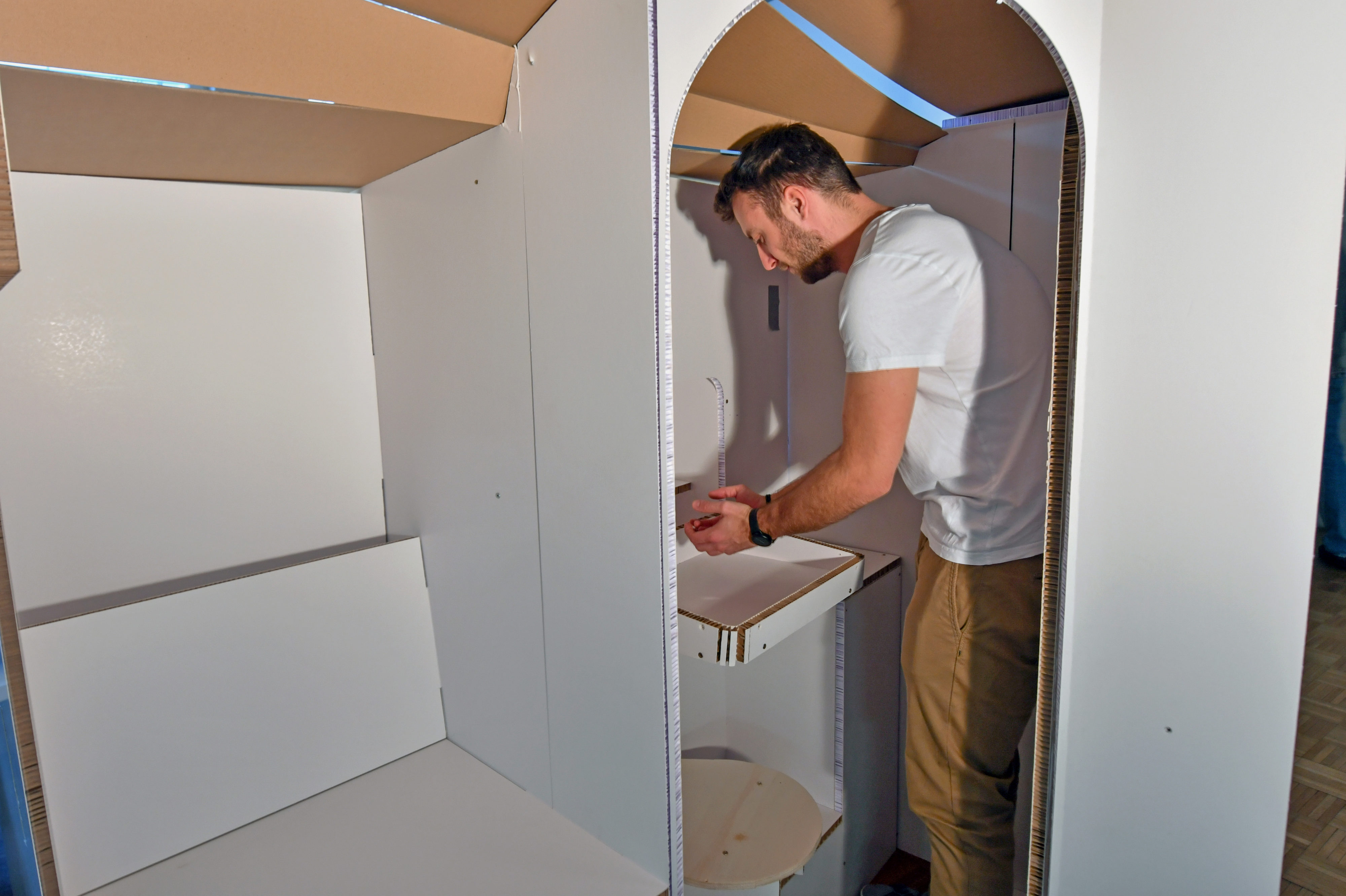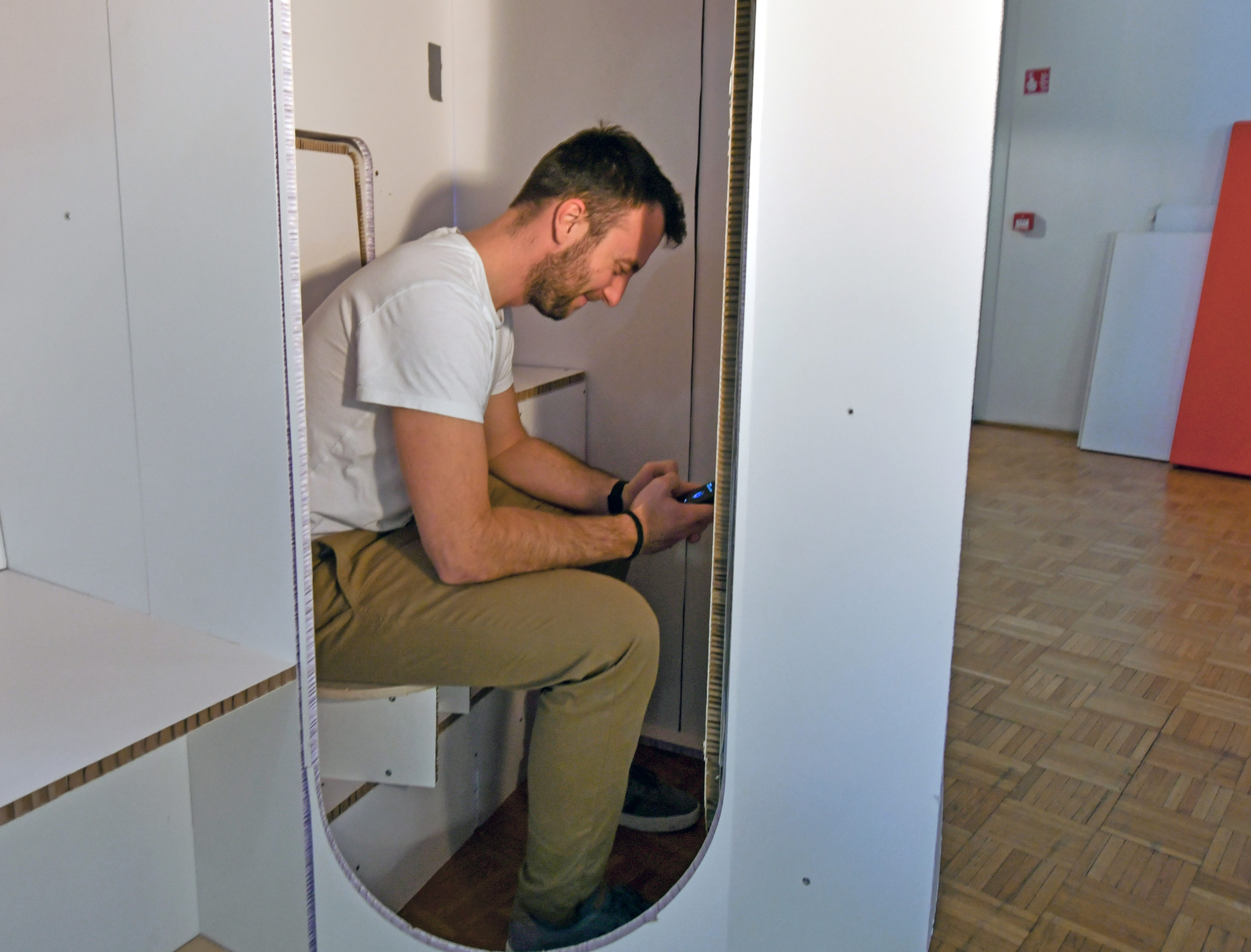We’re a design studio called GIGO Design based in Ljubljana, Slovenia. It’s a team of about 11 members coming from relatively different backgrounds. A big part of the team is in the product design department, which was heavily involved in this project alongside the research department.
Could you tell us shortly what does GIGO mean?
GIGO means Garbage In Garbage Out… meaning we try to get important inputs to prevent the garbage coming in. Design should advocate clear inputs, viable products, and that everything can be produced in an economic and sensible way.
Tell us a little more about this process?
With the development of the First 36 we took quite a co-creative approach, so to say. The users were literally included throughout the whole process. We conducted thorough user research at the beginning of the project, trying to learn what users need all around the globe, from which we build a mock-up and then continued to develop with the same users. For instance, a one-on-one cockpit prototype was even able to lean as it will be while sailing. All to say, a lot of new approaches were thoroughly tested before we committed to the end design result.
You’re a part of the bigger team that was working on this boat. Can you tell us a little bit more about that?
I think it’s one of the best teams you could wish for. I believe that bringing together; literally, the best experts from their field talks about the responsibility from everybody toward keeping the First brand where it should be.
This is not your first sailing project?
No, we had experience in nautical design, since we worked with Seascape since the Design of the 27SE. So we worked on the 27, 24, 14 and now the 36-foot boat.
How is the 36 different to the 27?
First 36 compared to 27 is a completely different beast in a way. We learned to be very resourceful with space on the 27, since it is a small boat, and we applied some of that knowledge here, but our main focus was on something else. The specific challenge on the 36 was to try to get as much as possible comfort for the users while keeping within the performance goal.
And how did you achieve that?
Basically, there is no superfluous details, there are no superfluous features – on the boat, you can find only what needs to be there, nothing more and nothing less.
What kind of experience did you have in mind when you were designing this boat?
We wanted the boat to perform well in all the scenarios, so it needed to quickly transform from a very sporty boat to relatively simple to something more family-friendly, to something where one person has everything in control, and so on. We tried to look at everybody who uses this boat, from small kids to adults; you always need to take care of specifics.
If you could put shortly, First brand stands for?
I would say that the First brand stands for true sailing in its essence.
What should the modern First offer?
I think it should be predominantly easy to use. I think it’s about how easy it is to sail and how easy it is to sail well. It’s about how easy it is to use and enjoy whilst on anchor. It’s about how easy it can be when you’re preparing for sailing, packing, and unpacking – all the worries of preparation should be taken away – so you can really focus on the actual experience of sailing.
What is the essential feature of the new First in your eyes?
I would say it’s the connection of the outside with the inside, specifically the interior’s flexibility. We spent quite a lot of time figuring out how people use the boat while being indoors, which showed us there are many misconceptions in the industry. So I think the First 36 brings something different to the table when It comes to enjoying your time also inside.
Tell us more about the result of that.
One of the main innovative features you’ll see on the First 36 is the bathroom. We spent quite a lot of time figuring out what kind of bathroom people need and how much space it should take up. In there, we made a lot of space-saving features, so it makes a much smaller footprint, giving more space to living areas.
Why is this layout specific?
We wanted to figure out how to reorder cabins, salon and kitchen. The specific point comes from the position of the bathroom. We thought a lot about the quality of space, so bathrooms are usually in the highest quality area on the sailboat. So we moved it into an area where it’s still completely usable but it doesn’t take up the best space on the boat.
How does the 36 differ from the competition?
I think the 36 compared to other boats offers more flexibility. It’s definitely not a single-use boat. From the broad research we did before starting the design process, we learned that the boats are not used for racing or for holidays and cruising – it is mostly a combination. And the 36 strives to be in that sweet spot, where it’s not compromising any of those uses but bringing something new, something more to whatever user might find themselves in.
New First in one sentence?
The new First is the easiest to use performance sailboat.
Beneteau is scheduled to build 25 hulls in the first year of production for the world and Murray Yacht Sales has hull number 24. She will be out sailing in the Fall of 2022.
Beneteau Gulf Coast
First 14 – First 14 SE – First 18 SE – First 24 – First 24 SE – First 27 – First 27 SE
Oceanis 30.1 – Oceanis 34.1 – First 36 – Oceanis 38.1 – Oceanis 40.1 – Oceanis 46.1 – Oceanis 51.1
First Yacht 53 – Oceanis Yacht 54 – Oceanis Yacht 62

